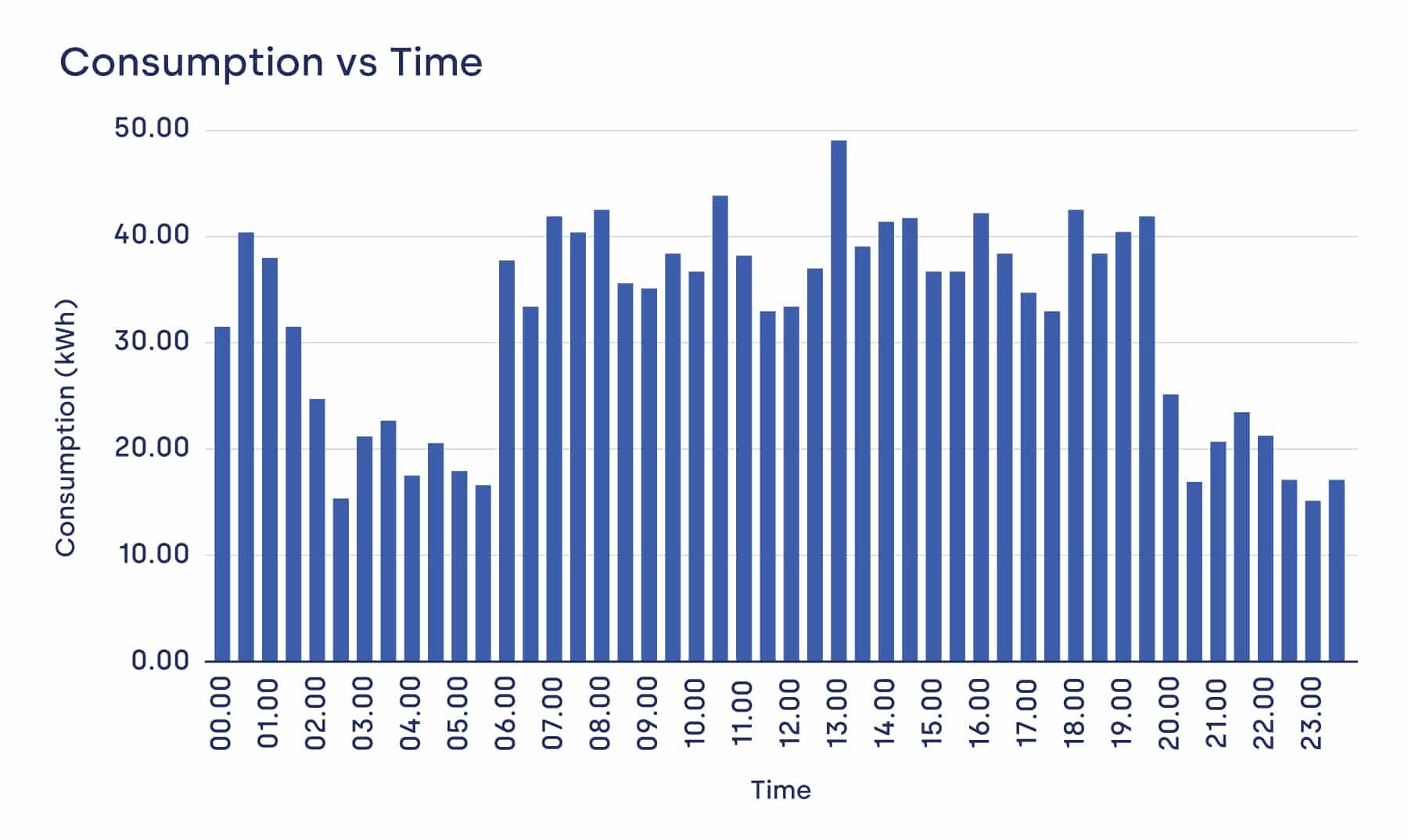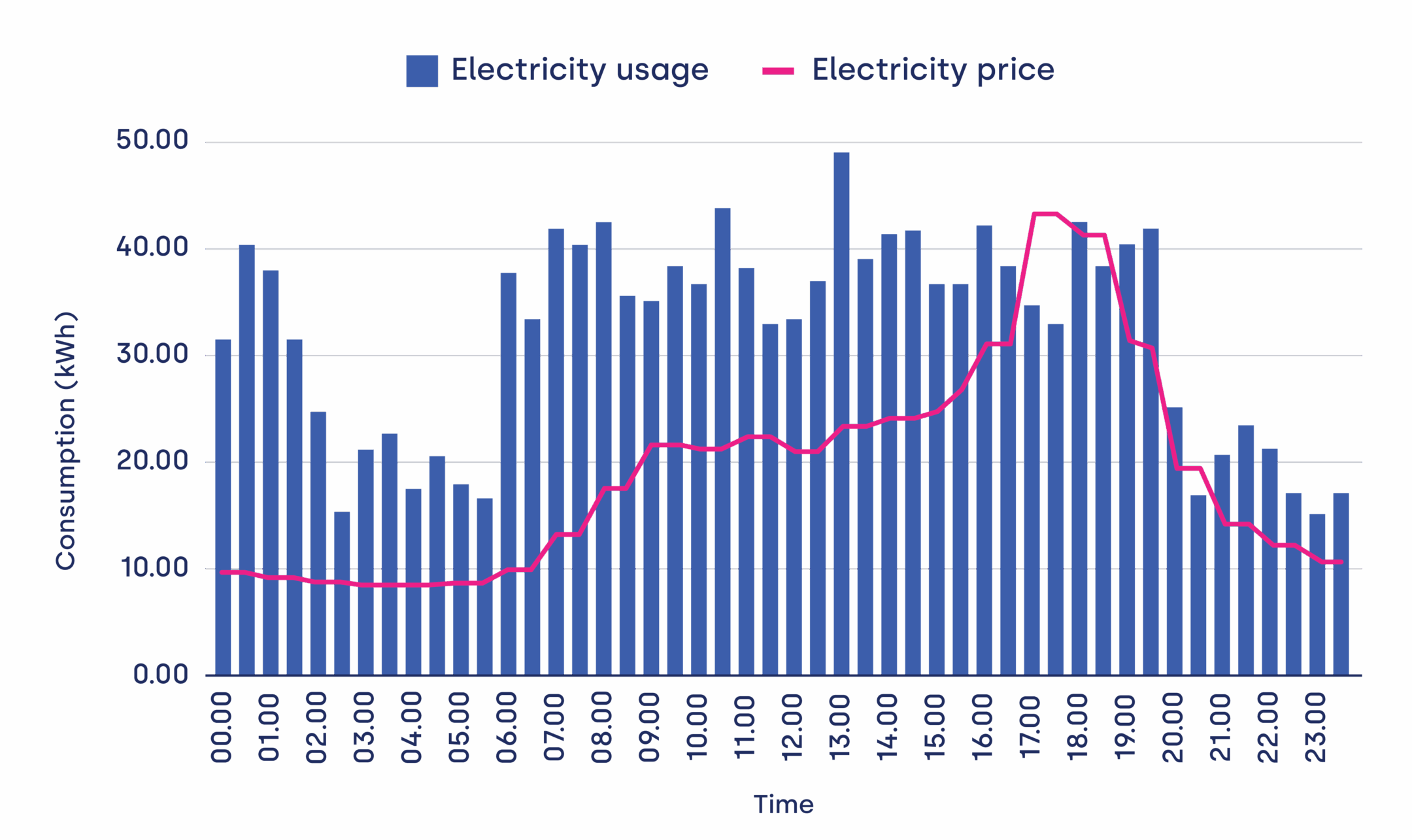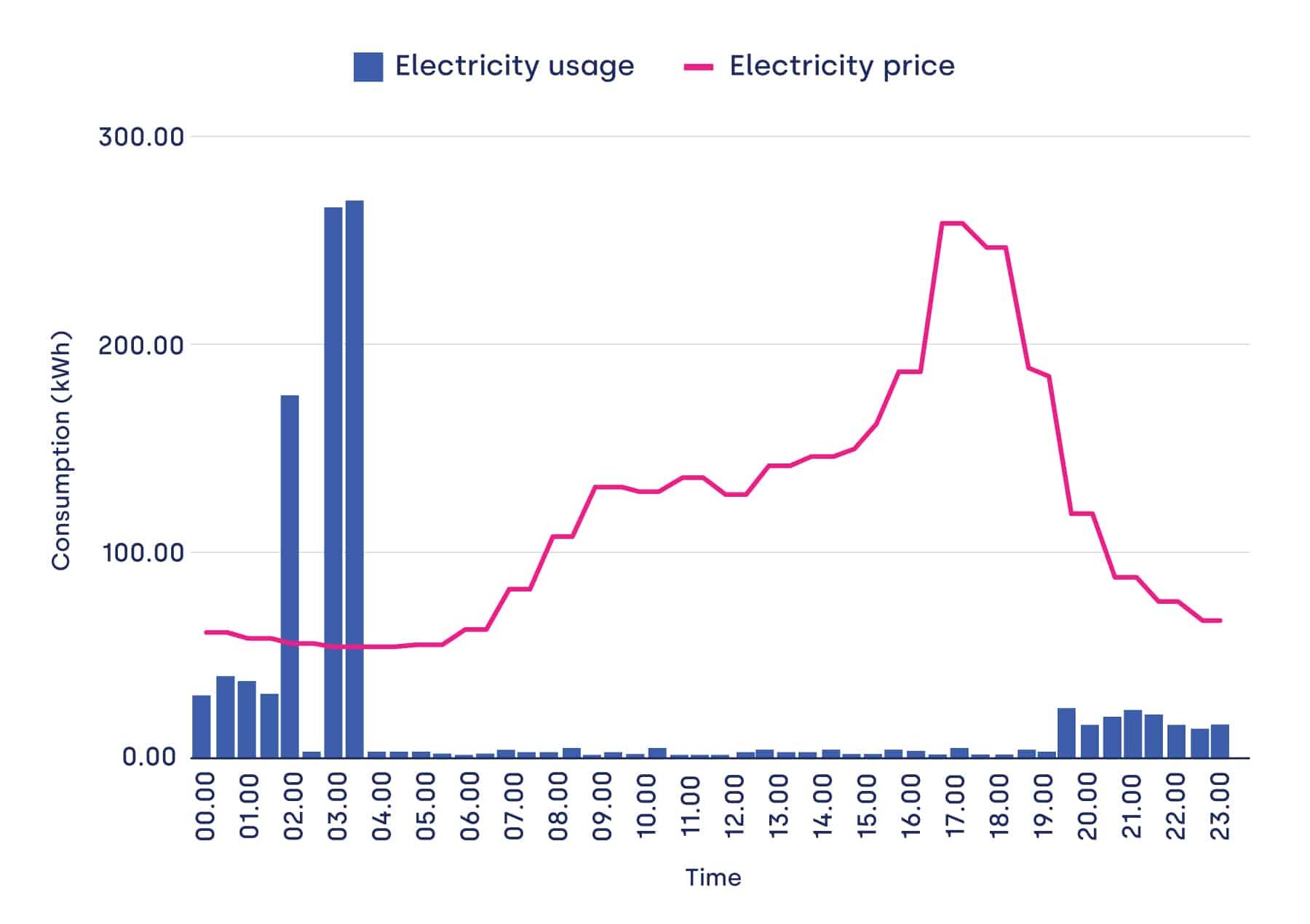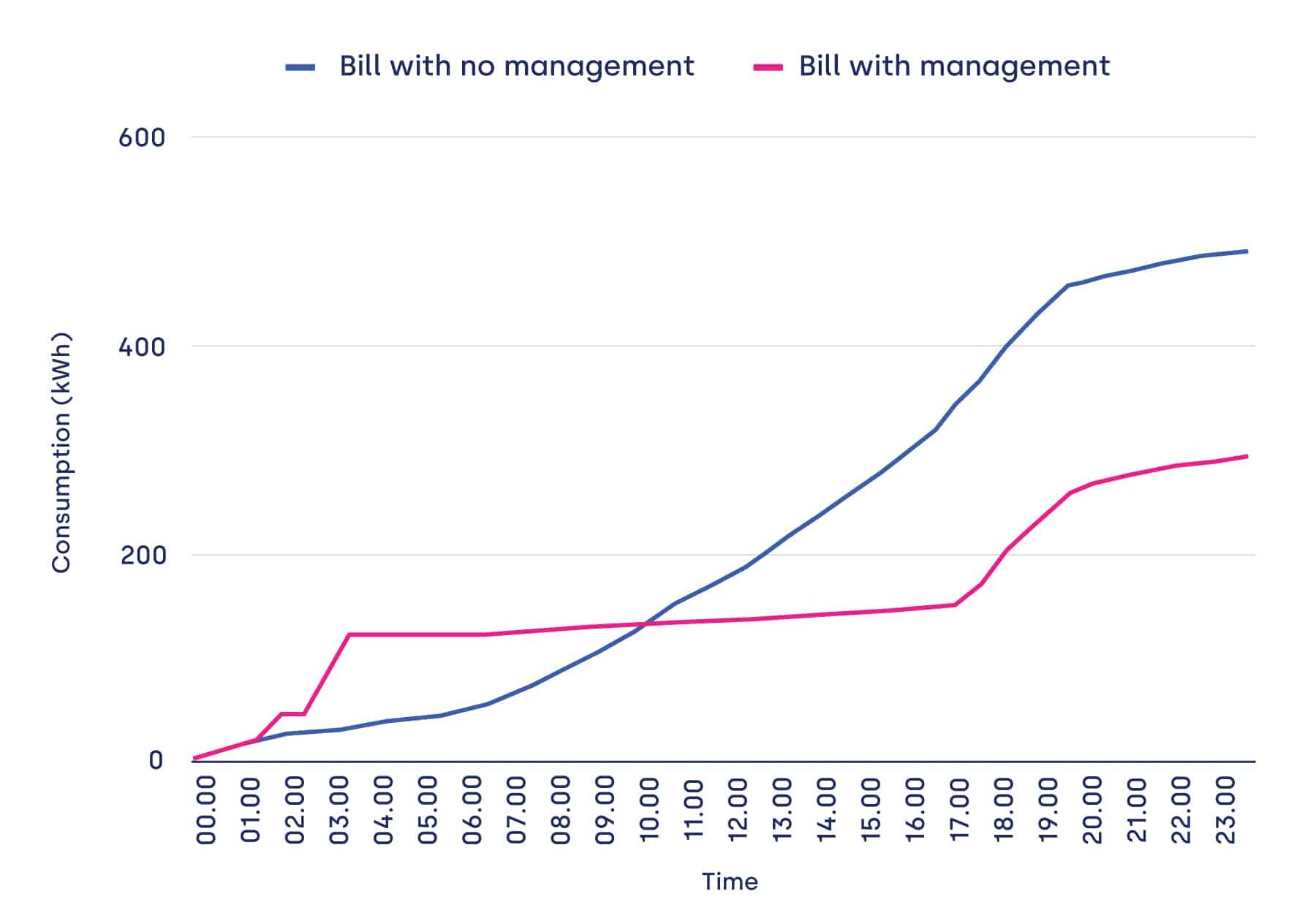Energy prices in the UK have become increasingly unpredictable, swinging from negative values to extreme peaks in the space of hours. For commercial and industrial businesses, these fluctuations can erode margins, disrupt planning, and undermine energy security. The challenge is no longer about weathering the occasional spike – volatility is now a permanent feature of the market.
In 2024, the UK saw 149 hours of negative wholesale electricity pricing (up from just 29 hours in 2022) and day-ahead prices spiking by more than 470% within a single day in December. Ofgem warns that with more renewables on the grid and less fossil fuel backup, volatility will be here to stay.
For energy-intensive operations, these swings can wreak havoc on budgets. The good news? With the right systems in place, volatility can be turned into an advantage: cutting costs, protecting margins, and even creating new revenue streams. With the right combination of onsite renewables, battery storage, and intelligent energy management, UK businesses can insulate themselves from price shocks, take advantage of low-cost periods, and even generate additional revenue.
READ: Energy Storage in the Booming British Market »
The following case study comes from a mid-sized manufacturer in the Midlands. It shows how Wattstor’s technology and tariff innovation can turn one of the UK’s most volatile energy days into a cost-saving success.
How much could you save with Wattstor?
On 12th December 2024, energy price fluctuations in the UK reached record levels. In this context of heightened volatility, a mid-sized manufacturing site in the Midlands still needed to power its operations as per usual, with high electricity consumption during the daytime, and lower consumption at night.
The energy consumption of the manufacturer looked like this:
The graph represents the average daily electricity consumption of a typical mid-sized manufacturing site, showcasing increased consumption between 7 am and 7 pm, and reduced consumption at night time.
If we overlay the site’s electricity consumption with the fluctuations of energy prices, we immediately notice that the period of highest energy use coincides with a price spike – an unfortunate coincidence for our manufacturer! As a result, the business owner would have had to pay £515 for electricity on that day alone.
The red line represents the fluctuations of wholesale electricity prices during the day. It’s easy to notice that prices increase during the evening, as consumers demand more power and renewables generate less electricity. This means that, if relying solely on the grid, our mid-sized manufacturer would need to pay more for the electricity needed to power its operations at that time.
Luckily, the business owner is already benefiting from Wattstor’s onsite renewable energy systems. These combine onsite solar PV, battery storage, and our AI-based energy management system (EMS), Podium.
As a result, the UK manufacturer’s peak energy use happened while onsite generation and storage were strong. This allowed the site to power operations with its own electricity, instead of relying on expensive grid supply.
The result? A bill of £310 instead of £515.
On the other hand, the manufacturer is drawing lots of electricity from the grid during the night: this allows them to charge their battery storage when grid prices are lowest and onsite renewables are not actively generating power.
The graph shows that the manufacturer’s need for grid electricity has drastically dropped, as most of their energy needs are now covered by onsite renewables and storage assets. In this scenario, the manufacturer only needs minimal amounts of grid electricity when prices are highest.
The graph shows that, with the right technology and insights in place, electricity bills stay low and consistent (red). On the other hand, with no management measures in place, bills will naturally tend to spike (blue).
Fixed Tariff vs Fully Dynamic Tariff
Now, let’s consider the impact of the British manufacturer’s energy tariff on its electricity bill. The graph below shows the dynamics of a fixed versus a fully dynamic tariff. It’s easy to see that, most of the time, the manufacturer would be better off on a fully dynamic tariff, paying less when wholesale electricity prices drop.
However, there are instances where a sudden price spike means their bill would also suddenly rise. If instances of price spikes increase, the manufacturer will have a problem. A fixed tariff can protect them from spikes, but doesn’t allow them to benefit from price drops.
The solution? Wattstor has recently launched Price Protect, the only fully dynamic renewable tariff on the market, with a price cap. With Price Protect, the manufacturer will get the best of both worlds: they will always pay less than the market price for their electricity, but never more than agreed.
In this example, a fixed tariff will protect the manufacturer in the one instance in which prices are spiking. However, they won’t be able to benefit from lower wholesale prices for most of the time.
With a fully dynamic tariff, the manufacturer will usually benefit. But they remain exposed to higher costs when wholesale prices spike.
Price Protect gives British businesses the best of both worlds. A price cap shields them from spikes, while the dynamic mechanism lets them profit when prices fall.
Turning price volatility into commercial opportunity
For UK businesses, it’s no longer a question of if electricity prices will fluctuate. The real question is how prepared they are to deal with it.
By combining onsite renewables, smart battery storage, and intelligent energy management, volatility stops being a cost risk. Instead, it becomes a cost-saving opportunity.
„It is our vision to empower every business and community to actively participate in the green energy transition and financially benefit from it.“
Stephan Marty, CEO at Wattstor
Wattstor is a next-generation energy company providing complete onsite renewable energy solutions. We believe clean, affordable energy is a business essential. We are committed to removing all obstacles to the clean energy transition.
Our fully funded energy systems help energy-intensive organisations move towards net zero. There are no upfront costs, and electricity prices are guaranteed to be lower than the grid.
We provide industry-leading consultancy, unique tariffs, and state-of-the-art solar plus BESS. Combined with a powerful AI-based EMS, Wattstor is the one-stop specialist for organisations eager to accelerate their net zero ambitions.
Sales: [email protected]
Need help? Visit our Wattstor Customer Support Portal.
DOWNLOAD THE FULL WHITEPAPER »
Know someone who'd be interested in this? Why not share it:






